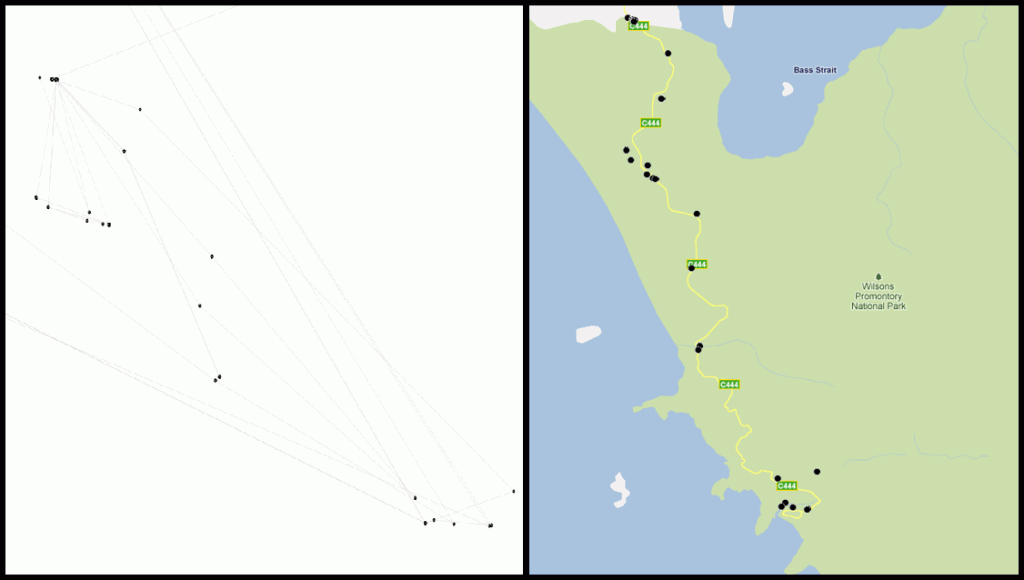Geographies of access
Following on from the last post on an analysis of the movement of rangers, I’d like to discuss another interesting (if not obvious) finding from the diary study. That is: that accessibility dictates what is possible to know.
Access and infrastructure are common topics in ubiquitous computing literature – access to “digital space” is dependant on infrastructure that supports it: a wifi signal, 3G telecommunications towers, an internet cafe. Similarly, infrastructure can dictate the ways we navigate a space – we might choose a cafe to eat at depending on the likelihood of an internet connection; less “digitally” focused, the car route we choose to one destination depends on the roads that exist, but then also our knowledge of the likely traffic conditions of those roads. In each case: access to infrastructure (and the quality of that access) influences our behaviour.
This isn’t as obvious in the image I generated for the previous post, but after doing a lazy google map of the data the trend is clear: almost all entries were made on or near a road. Even those taken “off road” were generally not far from it – judging from conversations with rangers, these places are generally within walking (or equipment-carrying) distance of their vehicles. Also, the few outliers visible on the map are taken along walking tracks, rather than roads. The volume of recordings on a place depends on the bandwidth of the access. Roads are high bandwidth, walking tracks less so – dense scrub: very low.
Some questions that this raises:
- How can you design for discovery of “new” knowledge when data-rich areas are also, by necessity, the most familiar?
- What opportunities will there be for technology to encourage exploration of new areas?
- How will existing infrastructure and accessibility to the park limit the potential for exploration?
Search
Geoplaced
This is a notebook exploring the gaps between geography, sociology, technology, science fiction and things between.
I used to write about my PhD here, which I finished in July 2013. You can download a PDF or order a print-on-demand copy of my PhD thesis.
Themes
- art (1)
- Augmented Reality (2)
- Brain Dump (17)
- Conducting a PhD (13)
- Context (6)
- essay-a-fortnight (2)
- fiction (1)
- Government (1)
- How to: Get a PhD (5)
- inspiration (4)
- Knowledge (15)
- Location (19)
- Methods (6)
- Mobile (2)
- Parks Vic (17)
- Place/Space (5)
- Research Questions (11)
- Technology (3)
- travel (1)
- ubicomp (7)
- Uncategorized (11)
- Visualisation (10)


